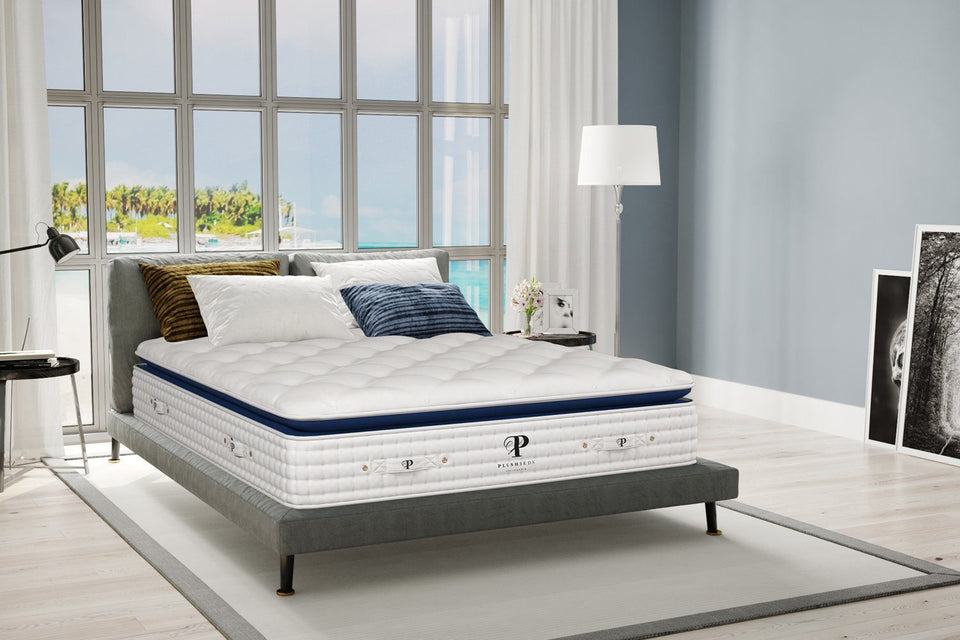Getting a good night’s sleep matters more than most people realize. According to a report, for a healthy adult human body, a sleep of 7-9 hours is necessary, and if you get less than 6 hours of sleep, you are likely to have health issues. When you lie down after a long day, your body asks for comfort and support. A mattress is not just a piece of furniture; it is the foundation of rest and recovery.
Among many options, Memory foam mattresses have become a popular choice for many people because they promise comfort that adapts to each body. Unlike traditional mattresses, memory foam responds to pressure and heat. This means it does not stay flat and stiff. It gently molds to your body shape, giving support exactly where you need it. Sleeping on a mattress that moves with your body reduces tossing and turning.
This article will explore five ways memory foam mattresses mold to your body shape and why they make sleep so comfortable.
1. Contouring to Your Curves
Memory foam mattresses are designed to respond to your body weight. When you lie down, the memory foam mattress compresses in areas where you need more support. At the same time, it lifts and cradles other areas, giving a perfect balance. This is why your body feels embraced instead of floating on top of a mattress.
- Supports the natural curve of your spine.
- Reduces pressure on shoulders and hips.
- Maintains alignment while you sleep.
How Contouring Works
When you apply pressure to memory foam, it softens where your weight is concentrated. This allows it to shape itself around your curves. The foam then slowly returns to its original shape when you get up. Contouring is the first way memory foam molds to your body, and it prepares your body for deeper support in other areas.
That is the reason the sales of memory foam mattresses are continuously on the rise, with their total market share expected to surpass $13,445.7 million by the end of 2032.
2. Reducing Pressure Points
Sleeping on a mattress that does not adapt can create pressure points. These points usually appear on the shoulders hips and lower back. They can cause discomfort numbness and restless nights. Memory foam spreads your body weight evenly across the mattress surface. This reduces concentrated pressure on any single point.
- Prevents pain in joints.
- Encourages healthy blood flow.
- Improves overall sleep quality.
The Science of Pressure Relief

The foam’s density allows it to compress gradually under heavier areas while supporting lighter parts of your body. This distributes weight evenly, which means your shoulders and hips sink just enough to prevent stress.
3. Adapting to Your Sleeping Position
Whether you sleep on your back side or stomach memory foam adjusts to your posture. The mattress reacts differently to pressure depending on how your body rests.
- Cradles your body in every position.
- Supports spine alignment.
- Reduces tossing and turning.
How Position Adaptation Helps
Memory foam remembers your body’s shape temporarily as you move during sleep. This means if you roll over, the foam adjusts quickly to the new position. It does not remain rigid like traditional mattresses. This flexibility improves comfort no matter how much you move at night.
4. Providing Even Support Across the Body
Uneven support in a mattress can lead to aches and misalignment. Memory foam molds to your body to provide consistent support from head to toe. This ensures that every part of your body is supported equally.
- Supports head, neck, spine, and legs.
- Helps maintain proper posture.
- Reduces muscle tension and soreness.
Consistency Matters
Even support is important for long term health. Memory foam reacts to your body weight and maintains its shape so that heavier areas like hips do not sink too much. At the same time lighter areas like arms and calves do not feel left out.
5. Adjusting to Temperature
A Memory foam mattress is also sensitive to body heat. It softens with warmth and firms up when cooler. This property allows the mattress to adapt to your body temperature while you sleep.
- Offers personalized comfort for every sleeper
- Prevents overheating or feeling too cold
- Maintains consistent support throughout the night
The Role of Temperature Sensitivity
As your body warms, the foam becomes more pliable and molds closer to your shape. When your body cools, the foam firms slightly, giving stability. This dynamic reaction ensures that support and comfort remain constant.
Note: The ideal temperature for a good sleep ranges between 60°F and 65°F (15.6°Cand 18.3 °C). However, it also depends on person to person.
Conclusion
Memory foam mattresses do more than just provide a soft surface to sleep on. They contour to your curves, reduce pressure points, adapt to your sleeping positions, and provide even support across the body. They minimize motion transfer and adjust to your temperature to give a truly personalized experience. Every time you lie down, your mattress reacts to your body, giving comfort and support exactly where you need it.
Choosing a memory foam mattress is not just a purchase; it is an investment in better sleep better health, and more energy for the day ahead. By understanding these six ways memory foam molds to your body, you can appreciate why so many people experience deeper, restful sleep.
